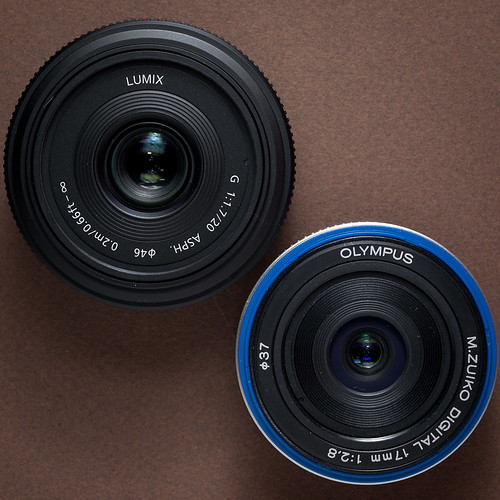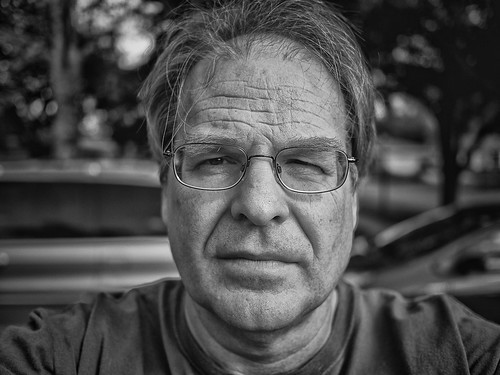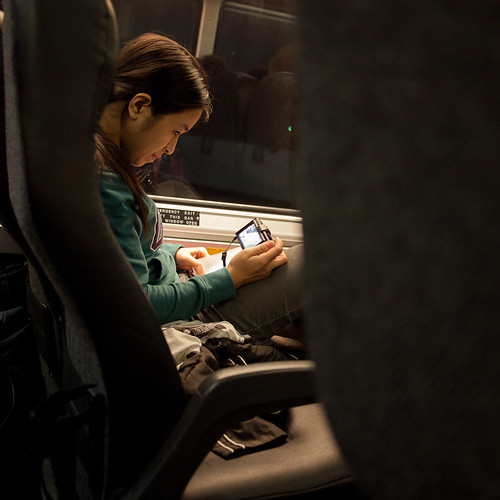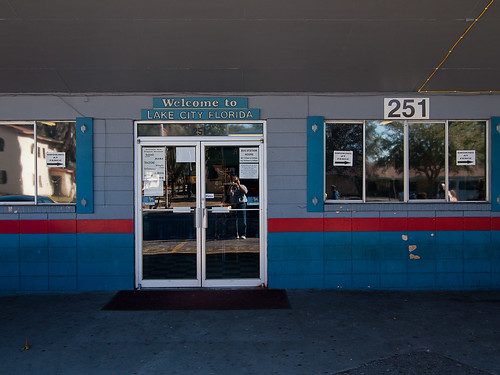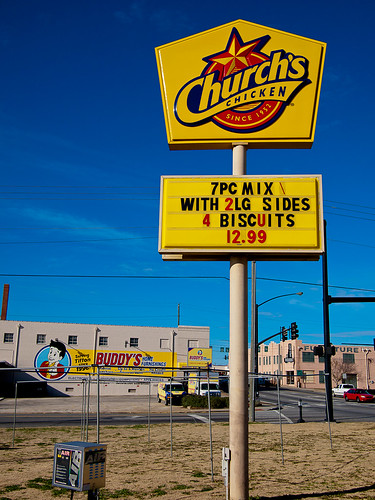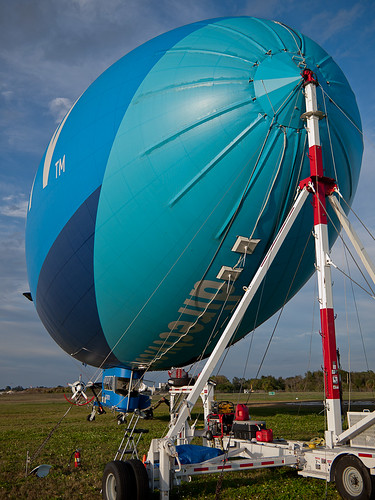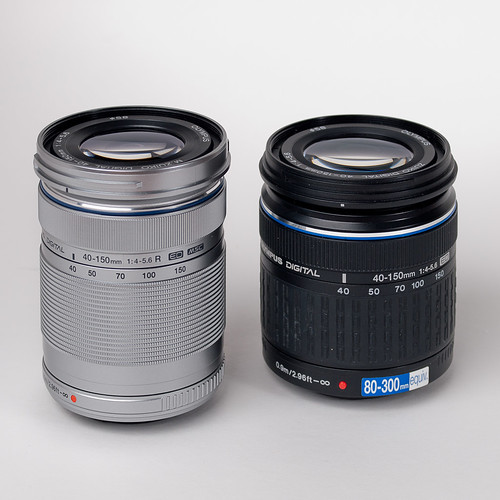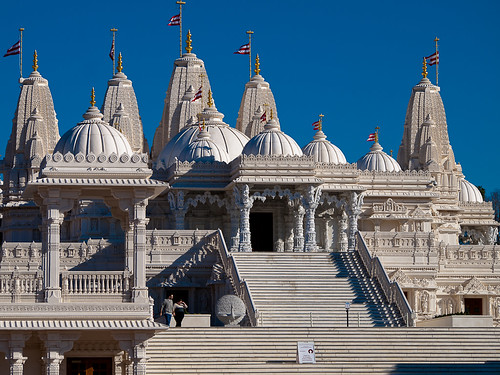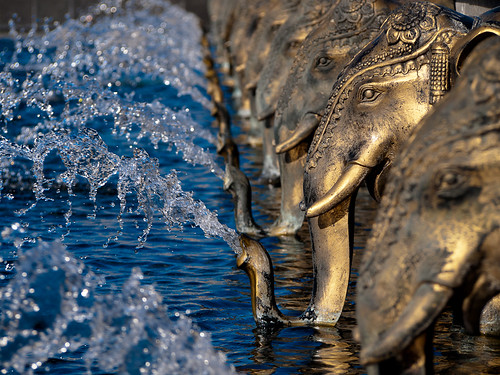Concept: 3 out of 5
Execution: 3 out of 5
Yeah, but: Despite its large size, it's a very small camera.
The Long Version: Fujifilm makes good cameras, and always have. While their most recent renaissance has surprised everyone, including Fuji, they have a long tradition of making quirky cameras that are genuinely designed for photographers. That must be why they also release more cheap mass-market point-and-shoot cameras per year than any other manufacturer – it keeps their marketing department distracted.
One year ago today – in an unbelievable coincidence – I looked at
Fuji's GX680III, their ultimate medium-format studio camera. I was impressed enough by it to start looking at other medium format cameras, which is how I ended up owning its smaller sibling, the
Fujifilm GA645Zi. This little gem was introduced in 1998, first in the goldy 'titanium' colour, and only later in an all-black model.
The Fuji GA645 series is an entire family of fixed-lens autofocus cameras that's an extension of the previous GS folding-lens manual-focus cameras. The "6x4.5" negative is actually about 56mm by 41mm, making it small by medium format standards but still two-and-a-half times the surface area of a 35mm negative. That's definitely bigger-enough to show a quality improvement over 135 film, and makes the negatives easier to scan and more forgiving to deal with. Used properly, the 645 format gives just as much usable image as a cropped 6x6 frame, with the advantage of having a few extra exposures per roll.
More specifically, the Fujifilm GA645
Zi that I use is the zoom-lens version of the older GA645 that
Dante Stella has already
ably reviewed. But despite the similarity of the names, the Zi is a very different model from the other variants. It's the only one with a zoom lens, and the entire front of the camera has been restyled into something that looks a little more conventional than the original.
The GA645 family of cameras have autofocus, power film loading and advance, built-in meters, and are completely at home in Program and Aperture Priority modes. I'm not quite sure what the technical definition of a "point and shoot" camera would be, but the GA's are pretty much there. They have an exposure compensation button, but that and setting your own film speed are about it for over-rides. There is a large control dial, which is used for changing settings, but this camera isn't hard to figure out.
Yet for a camera with such simple operation, there is a bit of complexity to deal with: the mode dial has "A" and "AS" positions to choose from. Both are aperture-priority, and the difference only matters when using the flash. The "AS" will use the metered exposure and add the flash for fill, which is how most cameras work in aperture priority modes, while the "A" mode will force the camera to a 1/45 shutter speed. Being a leaf-shutter camera, the flash will sync all the way up to the camera's 1/400 maximum, making the little pop-up useful for catchlights and fill even thought it can't light up a room.
While still on the subject of the mode dial, it's worth pointing out that the "P" mode is strictly program, without any "shift" that would let the photographer cycle through possible aperture and shutter speed combinations. And even though the large control wheel can't be used to directly set the shooting values while in Program mode, changing the exposure compensation remains a button-and-dial task. But as Program protects the camera from running out of shutter speed in daylight, it's still what I prefer to use.
It also doesn't hurt that "P" is right next to "Off"… convenience is king.
If you squint your eyes just right, the GZA645Zi is a spitting image of the current Fuji X10 compact camera. Okay, maybe they're not twins, but there's a definite greyhound-and-whippet family resemblance.
The medium-format GA645 is about the size of a big 35mm SLR, but much smaller than a "pro" body, or even a midrange one with a compensator-pack strap-on handgrip. Compared to a basic D700, it's a little longer but less high; when turned off it's thinner than the SLR with any lens attached. Yet if the two aren't side-by-side, the GA645Zi looks bigger and bulkier than it really is. The body is plastic, and not as sculpted as contemporary cameras, but perhaps it's the medium-format reality breaking up the expected proportions of dials, lens, and viewfinder that makes the camera look bigger than it is.
But despite the camera's respectable physical size, the GA645 is very small. It has a vertical footprint - length times height - of about 175 square centimeters, and a film surface of 23sqcm. That gives it a camera to sensor-size ratio of 7.6:1, while one of the smallest 35mm film cameras ever made, the Olympus XA, has a ratio of 7.4:1. The contemporary "compact" Fujifilm X100 is an elephantine 25:1, and the Panasonic GF3 is 32:1. Looked at from the opposite direction, to have a typical digital happysnaps match the GA645's ratio of sensor size to physical size, the camera would be about as large as a dime. So while the GA645Zi isn't about to fit in a trouser pocket, it really is an amazingly compact camera.
Even with that bit of rationalizing aside, the GA645Zi is a small camera in other ways as well. It doesn't need a tripod, light meter, or any of the other accoutrements that usually go with medium-format image quality. It has a fixed lens, so there's no need for a bag full of alternative perspectives. In fact, there's no need for a camera bag at all. I found the vertical strap lugs too tempting to pass up and just carry the camera on a Domke shoulder strap most of the time. All it really needs is a few of extra rolls of film, and a new pair of CR123 batteries every year or two.
Running 120 film horizontally through the camera makes the negative 6cm high, so the width needs to be 4.5cm. That gives the GA645 a natural portrait orientation, which takes a little getting used to at first. The viewfinder zooms along with the lens, in addition to having frame lines that change to give an approximation of the frame size at different focusing distances.
The viewfinder of the Zi leaves me with mixed feelings. My subjective impression is that it's a little small and not the brightest, but then I tried it against a Nikon D7000 and the size and brightness looked about the same. But there's always a little flare around point sources of light, and it's never really crisp even with the diopter adjustment.
I suspect that part of my uncertainty about the viewfinder comes from the tunnel effect; even with eyeglasses I have no problem seeing the full frame. It's a short tunnel, to be sure, but the Fujifilm Zi doesn't have the same window-on-the-world effect as my other ZI, the magnificent m-mount Zeiss Icon.
The other non-ideal aspect of the GA645Zi's viewfinder is that it shows fairly strong barrel distortion. This has nothing to do with the lens, as it's not a TTL viewfinder, but it still makes it more difficult to create a composition that's straight, square, and level. The lens itself does have barrel distortion at its wider end, but it's not an issue at its longest setting.
The lens on the Zi is 55-90mm, which works out to about 35-55mm in 35mm equivalents – although in a 4:3 rectangle, not 3:2 – and it has two intermediate steps in its zoom. Taking about a second to power through its range, the zoom does make some noise when it's working; while it's probably not loud enough to interrupt a conversation, I wouldn't want to use it when complete discretion is required.
The Zi doesn't actually have an autofocus confirmation beep, but you could be forgiven for thinking that it does. The AF motor makes noise when working, and since the lens resets itself to infinity between focusing, the camera always makes its quick two-tone chirp, even for a quick follow-up shot of the same subject. It's higher pitched but much quieter than the zoom motor, and sounds nothing at all like the shutter of most SLRs.
Autofocus is quick, and by combining passive and active systems it can literally focus in complete darkness without needing an assist lamp. Don't think that's an opportunity to be sneaky, though, since the yellow light from the viewfinder's information display can be seen through the front-facing window.
With just one AF point, the GZA645 cameras are big advocates of the focus-and-recompose style of photography. Manual focus is theoretically possible, but it's set through the menu as a focusing distance, which is two different ways of reaching 'useless'. But even when autofocusing, it's good to be in the habit of checking the LED distance scale on the right side of the viewfinder. Make sure that the dot looks like it's marking a realistic distance to your subject, as that's the only way to know if the sensor has actually hit the right spot. If the dot's flashing then it didn't lock on, which usually tells me that I'm closer than the camera's 1m minimum focusing distance.
The Zi captures sixteen shots on a roll of 120 film, and the film loads directly into the camera instead of being run through an insert. That makes it less complicated to load than a Hasselblad, in that it doesn't require more than two hands, and there's nothing to lose or break that can't be replaced for the cost of another roll of film. Simple. I like that.
The tremendous image quality in a (relatively) compact package, straightforward operation, and long battery life makes for a powerful travel camera. Autofocus makes it less taxing to use, auto film winding and advance means fewer chances for user error, and its somewhat goofy appearance should make it less attractive to the criminal underworld. This really is a medium-format camera that you could hand to a stranger in a tourist spot anywhere in the world, and not only get it back, but have them take a well-exposed and accurately focused photo with it as well. Just try doing that with a Leica or a 'blad.
The one real travel-camera shortcoming that it has is its slow lens, which reduces the usable margins at the edges of the daytime, but it turns out that that doesn't matter as much as I expected it to.
The Zi is an incredibly stable camera to hand-hold in low light. While I would stay above 1/30 for photographs that depend on fine detail, with care shutter speeds of 1/15s or lower are perfectly reasonable. When properly braced I've come away with adequately sharp photos from 1/6 second exposures, even though the camera remains hand-held. It's a substantial camera with a dainty little leaf shutter, so despite its not-too-bright lens it still performs remarkably well during dawn, twilight, and bad weather.
For tripod-night photography the Zi is still a decent contender, even though adding a cable release and handheld light meter removes much of its size and simplicity advantages. Aperture priority mode will only meter down to 2 seconds, and beyond that needs the "bulb" mode to be set with the camera in manual mode. There's a threaded socket for a traditional mechanical cable release on the side of the camera body, and the lack of a mirror and the aforementioned dainty shutter means that there's essentially no vibration when the photo is taken.

One potential problem that only applies to the GA645's Zi model is that the info LCD is on the film door, and connected to the body with a ribbon cable that can fail over time. This panel is a secondary display for the shutter speed and aperture, and displays the film setting (120/220), battery status, iso, frame counter, and exposure compensation value. It's also used to set the time and choose the data that is imprinted below each frame. Losing this display can cause some problems, and cameras without it should be considerably less expensive than fully-functional ones.
But there are a couple of work-arounds. There is an indicator in the viewfinder that shows when EV Comp is active, but not the amount or direction, although the exposure compensation is reset every time the camera is turned off. So one way or another this can be set – in half-steps – by feel. The iso value can also be set even if the display isn't working by counting the number of clicks. Spin the dial a lot in one direction; camera-left turns the value down and camera-right turns it up. The steps are Auto (for Fuji's bar-coded film) and then proceed in thirds-stop increments from there. Simply count out: 25, 32, 40, 50, 64, 80, 100, 125, 160, 200, 250, 320, 400, 500, 640, 800, 1000, 1250, 1600.
If the LCD is working, then the letter "A" will show when the iso setting matches a Fuji bar-coded film's box speed. This could be a useful setting if the camera is being used with different sensitivities of Fuji film, but all of the 120 film that I like is 400, and I typically choose a lower speed to force a certain amount of over-exposure anyway.
I see two main uses for the GA645Zi. Naturally, it's an excellent choice as a simple camera for casual and street photography, but with the quality of medium format film. Whether it's travelling to distant lands – Disney, Marine, Holy – or a back alley nearby, it's a robust and unassuming camera that can be slung over a shoulder and carried with ease.
The other role for a GA645 is as a secondary camera: the smaller, simpler companion to the main rig. Having one of these in the camera bag that also houses something more substantial, like a Hasselblad or a Fujifilm GX680, means that only one type of film needs to be carried. This simplifies logistics and opens up photo opportunities that the Serious Camera on a tripod can't do.
I love being able to go out for a day with just a couple of rolls of film in my pocket and the camera in hand. I try to keep my camera bag under ten pounds when it holds everything for a trip; the Zi weighs two pounds and only needs film. The flat profile of the vertically-carried GA645 means that it's less bulky than an SLR when it's slung on a shoulder strap, and the plastic body doesn't worry me when it scrapes and bumps into things.
While it wouldn't be my choice as an only camera to own, the GA645Zi is the first one that I reach for when I want to carry something good for no particular reason. That might sound like an odd endorsement, but I spend most of my time with nothing pressing to photograph, so having a camera with great image quality but a less serious intent becomes a huge asset. I'm making a real effort to simplify, relax, and embrace the vernacular. Having a little camera like the GA645Zi has been a huge help for that.
All of the photographs for this review were taken on Fuji 400H film, including the photos of the camera, which were captured with my Fujifilm GX680III. Since the Canadian Fuji reps were okay with me photographing their X100 prototype with my Zeiss Ikon while it was loaded with Kodak film, that only seems fair.
last updated 16 Jan 2012
